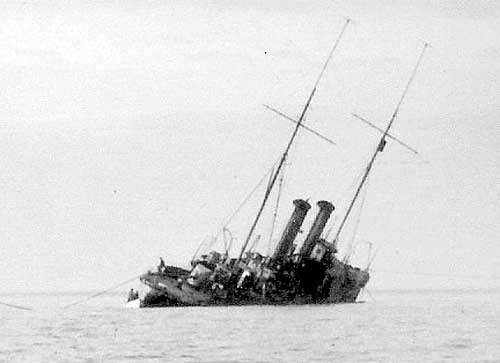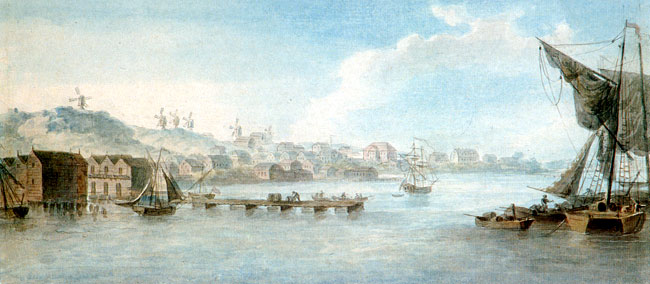|
UC-57
SM ''UC-57'') and combined with the ''U'' for ''Unterseeboot'' would be translated as ''His Majesty's Submarine''., group=Note was a German Type UC II minelaying submarine or U-boat in the German Imperial Navy (german: Kaiserliche Marine) during World War I. The U-boat was ordered on 12 January 1916, laid down on 14 March 1916, and was launched on 7 September 1916. She was commissioned into the German Imperial Navy on 22 January 1917 as SM ''UC-57''. In seven patrols ''UC-57'' was credited with sinking 5 ships, either by torpedo or by mines laid. ''UC-57'' disappeared in 1917 after landing a party of Finnish Jägers and 4 tons of munitions on the island of Hamnskär, circa from Loviisa, on 18 November. ''UC-57'' was going to remain on the seabed overnight and then return to Germany but never arrived. She was probably sunk by a Russian mine. Design A German Type UC II submarine, ''UC-57'' had a displacement of when at the surface and while submerged. She had a length overa ... [...More Info...] [...Related Items...] OR: [Wikipedia] [Google] [Baidu] |
List Of Shipwrecks In June 1917
The list of shipwrecks in June 1917 includes ship A ship is a large watercraft that travels the world's oceans and other sufficiently deep waterways, carrying cargo or passengers, or in support of specialized missions, such as defense, research, and fishing. Ships are generally distinguished ...s sunk, foundered, grounded, or otherwise lost during June 1917. 1 June 2 June 3 June 4 June 5 June 6 June 7 June 8 June 9 June 10 June 11 June 12 June 13 June 14 June 15 June 16 June 17 June 18 June 19 June 20 June 21 June 22 June 23 June 24 June 25 June 26 Jun ... [...More Info...] [...Related Items...] OR: [Wikipedia] [Google] [Baidu] |
Kaiserliche Werft Danzig
Kaiserliche Werft Danzig was a German shipbuilding company founded in 1852 as ''Königliche Werft Danzig'' and renamed ''Kaiserliche Werft'' after the proclamation of the German Empire in 1871. Together with Kaiserliche Werft Kiel and Kaiserliche Werft Wilhelmshaven it was one of three shipyards responsible for maintenance, repair and construction of warships for the Imperial German Navy. ''Kaiserliche Werft Danzig'' closed in 1918 after the end of World War I, but soon opened when Danziger Werft was founded on its site in 1919. History The history of the Danzig shipyard started 1844 when some area on both sides of the river Tote Weichsel at Danzig became property of the Royal Prussian Government. Named ''Marinedepot'' (1849–54) it was first only used as a depot and anchoring space for the few Prussian warships at the time. At the end of 1853 it became ''Königliche Werft Danzig'' (1854 – 1871), and was subsequently named ''Kaiserliche Werft Danzig'' (1871 – 1918) ... [...More Info...] [...Related Items...] OR: [Wikipedia] [Google] [Baidu] |
German Type UC II Submarine
Type UC II minelaying submarines were used by the Imperial German Navy during World War I. They displaced 417 tons, carried guns, 7 torpedoes A modern torpedo is an underwater ranged weapon launched above or below the water surface, self-propelled towards a target, and with an explosive warhead designed to detonate either on contact with or in proximity to the target. Historically, su ... and up to 18 mines. The ships were double-hulled with improved range and seakeeping compared to the UC I type. If judged only by the numbers of enemy vessels destroyed, the UC II is the most successful submarine design in history: According to modern estimates, they sank more than 1800 enemy vessels. List of Type UC II submarines There were 64 Type UC II submarines commissioned into the Imperial German Navy. * * * * * * * * * * * * * * * * * * * * * * * * * * * * * * * * * * * * * * * * * * * * * * * * * * * * * * * * * * * * * * * * See also References Citations Bibl ... [...More Info...] [...Related Items...] OR: [Wikipedia] [Google] [Baidu] |
World War I
World War I (28 July 1914 11 November 1918), often abbreviated as WWI, was one of the deadliest global conflicts in history. Belligerents included much of Europe, the Russian Empire, the United States, and the Ottoman Empire, with fighting occurring throughout Europe, the Middle East, Africa, the Pacific, and parts of Asia. An estimated 9 million soldiers were killed in combat, plus another 23 million wounded, while 5 million civilians died as a result of military action, hunger, and disease. Millions more died in genocides within the Ottoman Empire and in the 1918 influenza pandemic, which was exacerbated by the movement of combatants during the war. Prior to 1914, the European great powers were divided between the Triple Entente (comprising France, Russia, and Britain) and the Triple Alliance (containing Germany, Austria-Hungary, and Italy). Tensions in the Balkans came to a head on 28 June 1914, following the assassination of Archduke Franz Ferdin ... [...More Info...] [...Related Items...] OR: [Wikipedia] [Google] [Baidu] |
Propeller Shaft
A drive shaft, driveshaft, driving shaft, tailshaft (Australian English), propeller shaft (prop shaft), or Cardan shaft (after Girolamo Cardano) is a component for transmitting mechanical power and torque and rotation, usually used to connect other components of a drivetrain that cannot be connected directly because of distance or the need to allow for relative movement between them. As torque carriers, drive shafts are subject to torsion and shear stress, equivalent to the difference between the input torque and the load. They must therefore be strong enough to bear the stress, while avoiding too much additional weight as that would in turn increase their inertia. To allow for variations in the alignment and distance between the driving and driven components, drive shafts frequently incorporate one or more universal joints, jaw couplings, or rag joints, and sometimes a splined joint or prismatic joint. History The term ''driveshaft'' first appeared during the mid-19th centu ... [...More Info...] [...Related Items...] OR: [Wikipedia] [Google] [Baidu] |
Draught (ship)
The draft or draught of a ship's hull is the vertical distance between the waterline and the bottom of the hull (keel). The draught of the vessel is the maximum depth of any part of the vessel, including appendages such as rudders, propellers and drop keels if deployed. Draft determines the minimum depth of water a ship or boat can safely navigate. The related term air draft is the maximum height of any part of the vessel above the water. The more heavily a vessel is loaded, the deeper it sinks into the water, and the greater its draft. After construction, the shipyard creates a table showing how much water the vessel displaces based on its draft and the density of the water (salt or fresh). The draft can also be used to determine the weight of cargo on board by calculating the total displacement of water, accounting for the content of the ship's bunkers, and using Archimedes' principle. The closely related term "trim" is defined as the difference between the forward and aft ... [...More Info...] [...Related Items...] OR: [Wikipedia] [Google] [Baidu] |
Beam (ship)
The beam of a ship is its width at its widest point. The maximum beam (BMAX) is the distance between planes passing through the outer extremities of the ship, beam of the hull (BH) only includes permanently fixed parts of the hull, and beam at waterline (BWL) is the maximum width where the hull intersects the surface of the water. Generally speaking, the wider the beam of a ship (or boat), the more initial stability it has, at the expense of secondary stability in the event of a capsize, where more energy is required to right the vessel from its inverted position. A ship that heels on her ''beam ends'' has her deck beams nearly vertical. Typical values Typical length-to-beam ratios ( aspect ratios) for small sailboats are from 2:1 (dinghies to trailerable sailboats around ) to 5:1 (racing sailboats over ). Large ships have widely varying beam ratios, some as large as 20:1. Rowing shells designed for flatwater racing may have length to beam ratios as high as 30:1, while a cor ... [...More Info...] [...Related Items...] OR: [Wikipedia] [Google] [Baidu] |
Length Overall
__NOTOC__ Length overall (LOA, o/a, o.a. or oa) is the maximum length of a vessel's hull measured parallel to the waterline. This length is important while docking the ship. It is the most commonly used way of expressing the size of a ship, and is also used for calculating the cost of a marina berth (for example, £2.50 per metre LOA). LOA is usually measured on the hull alone. For sailing ships, this may ''exclude'' the bowsprit and other fittings added to the hull. This is how some racing boats and tall ships use the term LOA. However, other sources may include bowsprits in LOA. Confusingly, LOA has different meanings. "Sparred length", "Total length including bowsprit", "Mooring length" and "LOA including bowsprit" are other expressions that might indicate the full length of a sailing ship. LOD Often used to distinguish between the length of a vessel including projections (e.g. bow sprits, etc.) from the length of the hull itself, the Length on Deck or LOD is often repor ... [...More Info...] [...Related Items...] OR: [Wikipedia] [Google] [Baidu] |
Loviisa
Loviisa (; sv, Lovisa ; formerly Degerby) is a municipality and town of inhabitants () on the southern coast of Finland. It is located from Helsinki and from Porvoo. About 43 per cent of the population is Swedish-speaking. The municipality covers an area of of which is water. The population density is . The neighboring municipalities of Liljendal, Pernå and Ruotsinpyhtää were consolidated with Loviisa on 1 January 2010. Loviisa was founded in 1745, as a border fortress against Russia. Most of the fortifications have been preserved. Loviisa was originally called ''Degerby'', but king Adolf Frederick of Sweden renamed the city after his spouse Lovisa Ulrika after visiting the town in 1752. Loviisa is the site of two of Finland's nuclear reactors, two VVER units each of 488 MWe, at the Loviisa Nuclear Power Plant. The other operating reactors are at the Olkiluoto Nuclear Power Plant. History 18th century The town of Degerby was founded on the grounds of the ... [...More Info...] [...Related Items...] OR: [Wikipedia] [Google] [Baidu] |
Jäger Movement
The Jäger Movement ( fi, Jääkäriliike sv, Jägarrörelsen) consisted of volunteers from Finland who trained in Germany as Jägers (elite light infantry) during World War I. Supported by Germany to enable the creation of a Finnish sovereign state, the movement was one of many means by which Germany intended to weaken Russia and to cause Russia's loss of its western provinces and dependencies. History The recruitment of the Jäger volunteers from the Grand Duchy of Finland was clandestine and dominated by Germany-influenced circles, such as university students and the Finnish upper middle class. The recruitment was however in no way exclusive. In all, over 1,100 volunteers are estimated to have "slipped off" to train in Germany. The recruits were transported across Finland's western border via Sweden to Germany, where they were formed into the Royal Prussian 27th Jäger Battalion. The Jäger Battalion fought in the ranks of the German Army from 1916 in the battles on the no ... [...More Info...] [...Related Items...] OR: [Wikipedia] [Google] [Baidu] |




